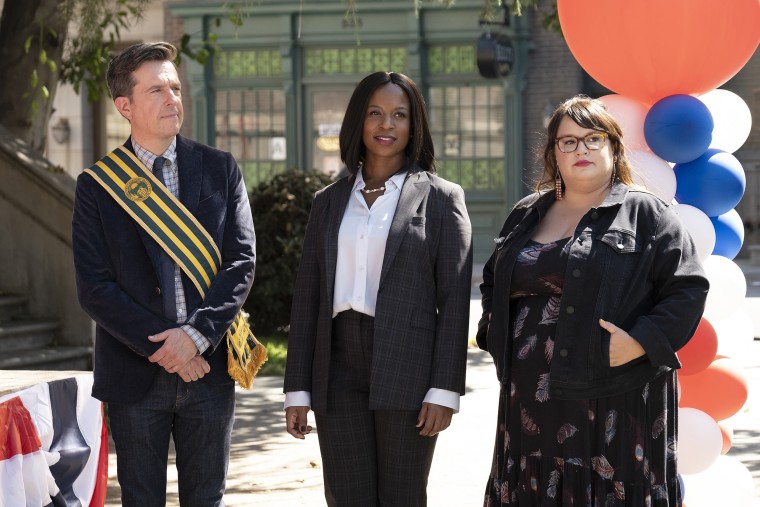Hollywood has been brutal to Indigenous peoples since essentially the invention of cinema: White, male filmmakers have, more often than not, used their power to depict us as rage-filled, vengeful, laconic, nearly naked half-humans loosed on the American prairie to murder, rape, pillage and kidnap. Early American cinema, like early American newspapers before it, was a popular nationalist propaganda mechanism, which often sought to demonize this land’s First Peoples and anyone else who wasn’t a white Christian.
For evidence, look no further than D.W. Griffith, whose 1915 film “Birth of a Nation” was an unconscionable act of racist propaganda against Black Americans credited with helping to revive the Ku Klux Klan. In a prior film, “The Battle at Elderbush Gulch,” he portrayed Natives as similarly vicious and violent, showing them surrounding a white family’s cabin before, of course, the U.S. calvary (instead of the Klan) rode to their rescue and killed the people of color.
But there is hope that the old white way of non-Natives telling our tales is coming to an end.
For more than a century, whether we were portrayed as the barely literate sidekick of the Lone Ranger, Tonto — whose name literally means “dumb” in Spanish and Italian — or enemies in need of killing in flicks like John Wayne’s “Stagecoach” or Kevin Costner’s “Dances With Wolves,” we’ve had to deal with white men telling Native stories. (And then there are the white actors, like Rooney Mara in “Pan,” who play us on screen; let’s not get into that right now.)
But there is hope that the old white way of non-Natives telling our tales is coming to an end — and one new TV show is a glimmer of that hope.
“Rutherford Falls,” which premieres Thursday on NBC’s streaming service, Peacock, is one of only a few shows ever created to have a Native lead and, behind the scenes, a bevy of brilliant Native minds to whip up the dialogue and build the story arc.
The lead actor isn’t only Native; she's an Indigenous woman, which is another way of being true to our history. For centuries in many nations and tribes — long before the white man stumbled our way — Indigenous women ran things. They were our leaders, and many still are, but that is rarely portrayed on TV or in the movies.
Native talent is no longer being relegated to the supporting cast or some background characters.
“The real treat that we’re getting from this show is an immense collaboration with Native writers, producers, musicians, designers, beadworkers,” Jana Schmieding, the lead, told me. But, she added, “This is the first of many Native shows.”
This is true. Māori Academy-Award-winning filmmaker Taika Waititi has teamed up with Seminole and Muskogee director and filmmaker Sterlin Harjo of the comedy troupe The 1491s to film the pilot for “Reservation Dogs,” which FX picked up for a series order in December. And legendary filmmaker Martin Scorsese is on the Osage Nation in Oklahoma right now filming “Killers of the Flower Moon,” a story about the Osage murders and the creation of the FBI, which has a long list of Native talent starring alongside Leonardo DiCaprio.
"We can’t be tokenized anymore," Schmieding said. "We’re really trying to normalize our existence."
This is partly why "Rutherford Falls" and the other shows in the works today are so significant: The actors, writers, producers and directors are the real deal — which has been rare in Hollywood. Native talent is no longer being relegated to the supporting cast or some background characters.
We are on the precipice of a new age of real Natives telling our stories that will resonate with viewers — whether they’re Native or not.
After all, since “Smoke Signals” — an independent film released in 1998, written by and starring Native talent — we’ve mostly had to create our own content and post it online to show our modernized selves to the wider world. Because even as time changed, and in a few ways we changed with it, Hollywood kept Natives in that black-and-white era — quite literally, if you saw Johnny Depp's bewildering makeup as Tonto in 2013’s “The Lone Ranger.” We must move beyond these nasty, antiquated, stereotypical Hollywood portrayals.
“Rutherford Falls,” however, shows modern Natives in modern America dealing with modern issues that other humans may face on the daily, too. You don’t have to be Native to love this show. You just have to love comedy, good storytelling and, I hope, a show that consciously rejects the other on-screen depictions of us you probably know all too well.
Not to put too fine a point on it, but be ready — and, really, you should be ready — for a complete rejection all of the false, antiquated iconographies of Indigenous peoples in mass media until this point in time, and, I promise you, you’re in for a fine treat.
We are on the precipice of a new age of real Natives telling our stories that will resonate with viewers — whether they’re Native or not.
Really, that’s the crux here: “Rutherford Falls,” “Reservation Dogs” and “Killers of the Flower Moon” will perhaps, in time, allow Indigenous peoples who have been closed off from these Hollywood spaces to be seen as the skillful storytellers and talented artists we are — and that we have been, long before the United States was even an idea.
Start the show.


